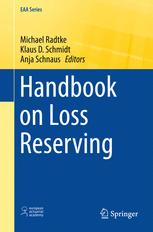

Most ebook files are in PDF format, so you can easily read them using various software such as Foxit Reader or directly on the Google Chrome browser.
Some ebook files are released by publishers in other formats such as .awz, .mobi, .epub, .fb2, etc. You may need to install specific software to read these formats on mobile/PC, such as Calibre.
Please read the tutorial at this link: https://ebookbell.com/faq
We offer FREE conversion to the popular formats you request; however, this may take some time. Therefore, right after payment, please email us, and we will try to provide the service as quickly as possible.
For some exceptional file formats or broken links (if any), please refrain from opening any disputes. Instead, email us first, and we will try to assist within a maximum of 6 hours.
EbookBell Team

5.0
40 reviewsThis handbook presents the basic aspects of actuarial loss reserving. Besides the traditional methods, it also includes a description of more recent ones and a discussion of certain problems occurring in actuarial practice, like inflation, scarce data, large claims, slow loss development, the use of market statistics, the need for simulation techniques and the task of calculating best estimates and ranges of future losses.
In property and casualty insurance the provisions for payment obligations from losses that have occurred but have not yet been settled usually constitute the largest item on the liabilities side of an insurer's balance sheet. For this reason, the determination and evaluation of these loss reserves is of considerable economic importance for every property and casualty insurer.
Actuarial students, academics as well as practicing actuaries will benefit from this overview of the most important actuarial methods of loss reserving by developing an understanding of the underlying stochastic models and how to practically solve some problems which may occur in actuarial practice.